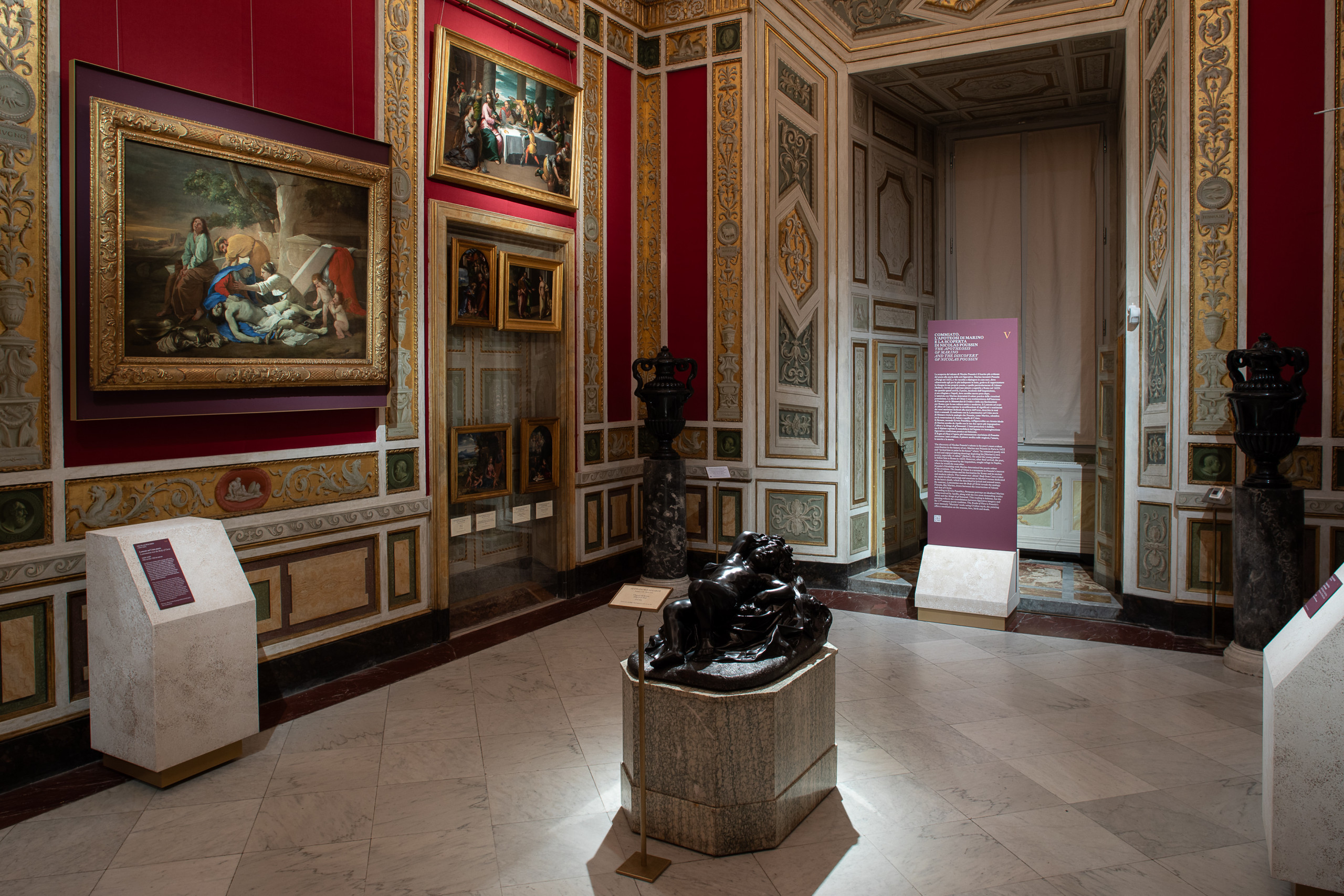THE APOTHEOSIS OF MARINO AND THE DISCOVERY OF NICOLAS POUSSIN

The discovery of Nicolas Poussin’s talents is the poet’s most evident contribution to the history of art. Marino met Poussin in Paris in 1622 and ‘invited him to paint in his house’ where ‘he remained mostly sick in bed and enjoyed making drawings depicting his [Marino’s] own poetry, especially of Adone’ (Bellori). He asked the young painter to follow him to Rome in 1623. However, after their arrival, the poet, who was being pursued by the Inquisition, sought refuge in Naples, where he would die soon after.
Poussin’s friendship with Marino determined the poetic colour of his creations. The Death of Chione is a testament to Poussin’s interest in Ovid’s Metamorphoses and his fascination for Rome and its ancient and modern culture. The Lament over Adonis’ Body from Caen evokes the multi-levelled meanings and emotions in Marino’s verses dedicated to the hero’s death, which he described in lyrical and sensual tones. By contrast, Lamentation over the Dead Christ reveals the analogy Poussin, like Marino, draws between the resurrection of Adonis and that of Christ.
According to Erwin Panofsky, Parnassus portrays an idealised Marino being received by Apollo, along with his two most demanding works: Adone and La Strage de gl’Innocenti. This reading is dubious, but the painting reflects the consolidation between figurative imagery and the 17th-century poetic tradition. The Realm of Flora is Poussin’s most intensely ‘Marinist’ work: using Ovidian myth, the painting offers a meditation on the seasons, love, birth and death.